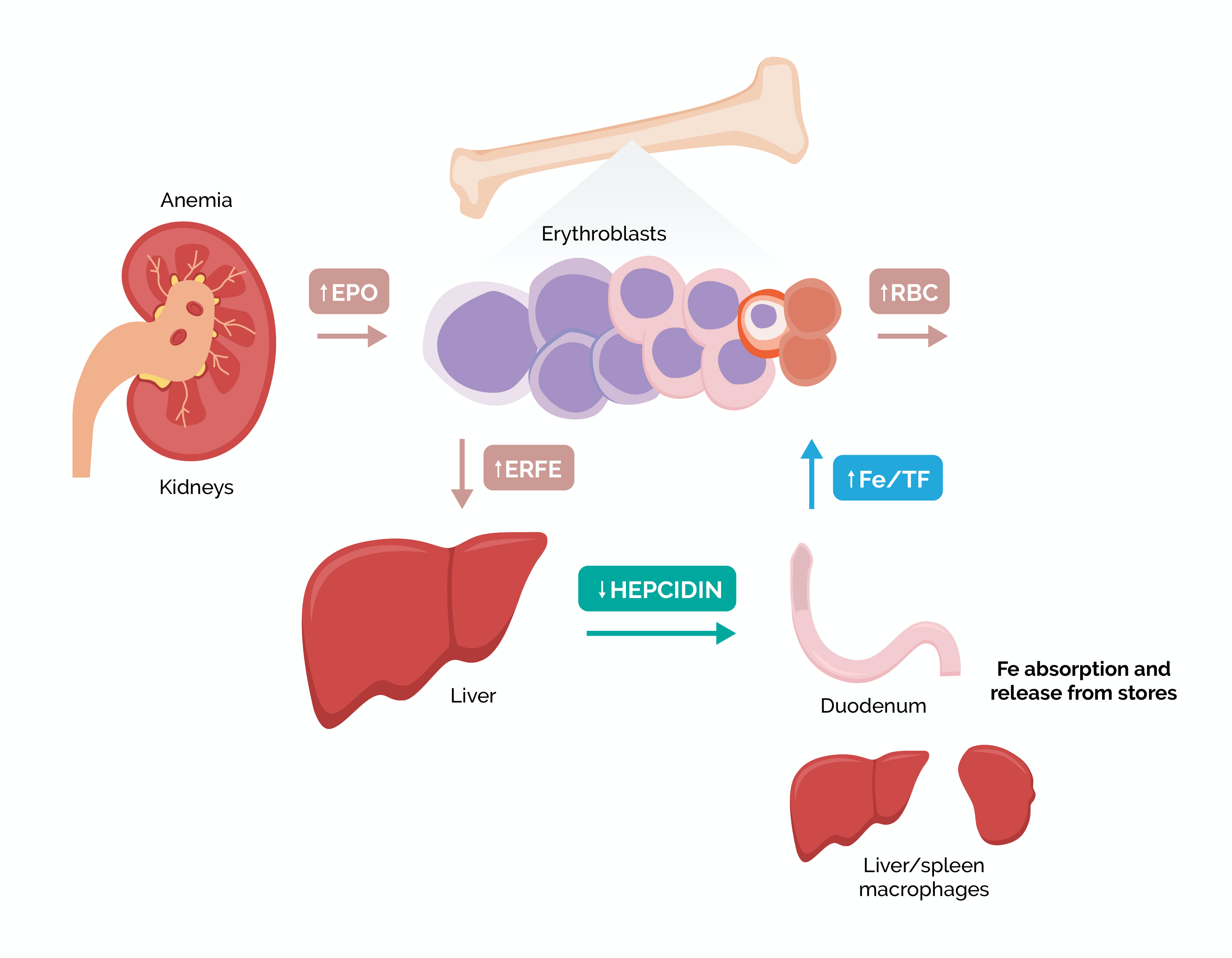About Erythroferrone
ERFE - UTILITY/FUNCTION
Erythroferrone (ERFE) Biology
Erythroferrone (ERFE) is a hormone produced by erythroblasts in the bone marrow in response to erythropoietin (EPO). By suppressing hepcidin expression in the liver, EFRE contributes to increased dietary iron absorption and recycling of stored iron necessary for recovery of blood mass after hemorrhage. In addition, ERFE is involved in hepcidin regulation in inherited iron loading anemias, such as β-Thalassemia. ERFE has potential as a clinical marker for assessing erythropoiesis in patients with blood disorders.
The general physiological responses are:
- In response to anemia, EPO production by the kidneys causes the erythroblast population to expand in the bone marrow causing increased ERFE production by erythroblasts.
- Circulating ERFE directly acts on the liver to suppress hepcidin production, resulting in reduced hepcidin in the blood. Low levels of circulating hepcidin allow the release of stored iron from macrophages and hepatocytes into the bloodstream plus it increases dietary iron absorption.
- This process delivers more transferrin-bound iron to the developing erythroblasts, resulting in increased heme and hemoglobin synthesis

ERFE - CLINICAL SIGNIFICANCE
• ERFE can predict mortality in patients with CKD and heart failure
• ERFE could be a therapeutic target for iron loading anemias
• ERFE levels may detect the abuse of erythropoiesis stimulating agents (ESAs) in the anti-doping field
References
Sarah Appleby, Janice Chew-Harris, Richard Troughton, Mark Richards, Christopher Pemberton. Erythroferrone Can Diagnose Acute Decompensated Heart Failure in Patients Presenting With Breathlessness. Circulation.
2018 Nov; 138: A11094.
Murphy D, McCulloch CE, Lin F, Banerjee T, Bragg-Gresham JL, Eberhardt MS, Morgenstern H, Pavkov ME, Saran R, Powe NR, Hsu CY. Trends in Prevalence of Chronic Kidney Disease in the United States. Ann Intern Med. 2016 Oct 4;165(7):473-481.
Benjamin EJ, Muntner P, Alonso A, Bittencourt MS, Callaway CW, Carson AP, et al. Heart disease and stroke statistics—2019 update: a report from the American Heart Association. Circulation. 2019;139(10):e56–528.
Arezes J, Foy N, McHugh K, Quinkert D, Benard S, Sawant A, Frost JN, Armitage AE, Pasricha SR, Lim PJ, Tam MS, Lavallie E, Pittman DD, Cunningham O, Lambert M, Murphy JE, Draper SJ, Jasuja R, Drakesmith H. Antibodies against the erythroferrone N-terminal domain prevent hepcidin suppression and ameliorate murine thalassemia. Blood. 2020 Feb 20;135(8):547-557.
Ramirez Cuevas K, Schobinger C, Gottardo E, Voss SC, Kuuranne T, Tissot JD, Favrat B, Townsend N, Leuenberger N. Erythroferrone as a sensitive biomarker to detect stimulation of erythropoiesis. Drug Test Anal. 2020 Feb;12(2):261-267.
